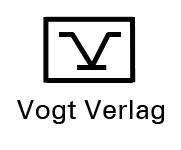Details
| Autor: | Najeeb Ul Hassan |
| Titel: | On Decoding of Spatially Coupled LDPC Codes under Latency Constraints |
| Typ: | Dissertation |
| Fachgebiet: | Informationstechnik |
| Reihe: | Mobile Nachrichtenübertragung, Nr.: 81 |
| Auflage: | 1 |
| Sprache: | Englisch |
| Erscheinungsdatum: | 27.05.2016 |
| Lieferstatus: | lieferbar |
| Umfang: | 146 Seiten |
| Bindung: | Soft |
| Preis: | 59,00 EUR |
| ISBN: | 9783959470032 |
| Umschlag: | (vorn) |
| Inhaltsverzeichnis: | (pdf) |
Abstrakt in Englisch
This dissertation focuses on the decoding of low-density parity-check (LDPC) con- volutional codes, also known as spatially coupled LDPC (SC-LDPC) codes. These codes combine the properties of both LDPC block codes (good performance for long block lengths) and convolutional codes (good performance for short block lengths), and are shown to be suitable for applications that allow medium to large block lengths. The first part of the dissertation deals with efficient decoding of SC- LDPC codes under practical constraints like decoding latency and decoding com- plexity while keeping their good performance advantage over LDPC block codes. We divide the decoders in two classes based on their resulting decoding latency and complexity; (i) block decoding runs belief propagation algorithm over com- plete chain of coupled codeword resulting in a large decoding latency and decoding complexity, (ii) windowed decoding, on the other hand, exploits the convolutional structure of the coupled code making decoding latency and complexity indepen- dent of the length of the code. We consider protograph based codes, since this allow us to assess the performance of code ensemble, rather than the performance of a single code. Both asymptotic and finite length analysis are performed to show the superiority of SC-LDPC codes over LDPC block and convolutional codes for medium to large latency range. For very short latency requirements, convolutional codes decoded using Viterbi decoder are found to be suitable. In order to reduce the decoding complexity, traditionally used uniform serial de- coding schedules are applied within the window. However, our results show that this only gains 18% reduction in decoding complexity compared to parallel decod- ing schedule. We propose non-uniform window schedules which are based on the observed decoding convergence behavior within a window. These result up to 50% reduction in decoding complexity compared to uniform window schedules without any loss in performance. Non-uniform schedules require estimates of error probability during the iterative process and hence the resulting schedule is time variant. However, based on con- clusions drawn using the asymptotic analysis, we propose a pragmatic decoding schedule that does not require any additional calculation within the decoding pro- cess and with little loss in performance reduces the decoding complexity by 45%
compared to the uniform schedule. Finally, taking into account the non-uniform nature of the update rule, we propose an implementation/sequencing strategy such that the decoding throughout is doubled without significantly increasing the hard- ware requirements. The second part of the dissertation deals with the application of SC-LDPC codes for block-fading channel. Block-fading channel is a suitable model for mobile-radio channel, where the channel state stays constant for multiple symbol durations (N_c ). Hence a codeword of length N is divided into F equal parts where F = N/N_c . Codes on block-fading channel are characterized by their (i) outage probability, P out , and (ii) diversity order, d. For block codes, a special structure is required to guarantee a required d. However in convolutional codes, it largely depends on the constraint length (or memory) of the code. We present bounds on the maximum achievable diversity for SC-LDPC codes de- coded using maximum likelihood (ML) decoder and a sub-optimal iterative de- coder. For a code decoded by an ML decoder, it turns out that d is related to the blockwise minimum Hamming distance d min of the code. However, since SC-LDPC (in general LDPC) codes are decoded using a sub-optimal iterative decoder, the maximum diversity under iterative decoding is calculated by the blockwise stop- ping distance s min of the code, where s min ≤ d_min . Here the main contribution is an algorithm to design a protograph for which s min = d_min . The root-LDPC code is one example of block codes that have a special structure to achieve d = F . However, these codes require R = 1/F , i.e., to achieve high diversity order, code rate has to be decreased. The major advantage of the proposed SC- LDPC codes is that these do not require a special structure to achieve the required diversity. Furthermore, diversity order can be increased by increasing the memory of the code and without decreasing the code rate. Another advantage of SC-LDPC codes is robustness against synchronization offset, where the loss in performance due to synchronization offset can be compensated by increasing decoding latency i.e., W for window decoder. On the other hand, root-LDPC codes have to be designed specifically for a given F and their performance drastically degrades in the presence of synchronization offset.


